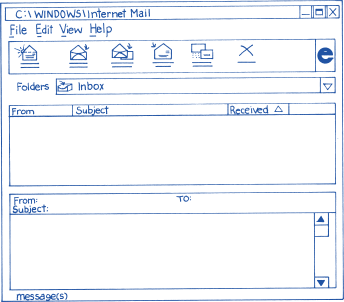"To Enrich the lives of families"
Home
Children
Teens
Child Care
Parents
Aging
Seniors
Literacy
En Espanol
Family Law
Health
Fitness
Careers
Small Business
Nutrition
Recipes
Travel
Entertainment
Money
Investing
Free Stuff
Safety
Inspiring
Relationships
Forums
Catalog
Glossary
ADDRESS: The unique location of an information site on the Internet, a specific file (for example, a Web page), or an email user.
BOOKMARK: A saved link to a Web site that has been added to a list of saved links so that you can simply click on it rather than having to retype the address when visiting the site again.
CD-ROM (Compact Disk Read Only Memory): A computer disk that can store large amounts of information and is generally used on computers with CD-ROM drives.
CHAT ROOM: A location on an online service that allows users to communicate with each other about an agreed-upon topic in "real time" (or "live"), as opposed to delayed time as with email.
DOWNLOAD: To copy a file from one computer system to another. From the Internet user's point of view, to download a file is to request it from another computer (or from a Web page on another computer) and to receive it.
EMAIL (Electronic Mail): A way of sending messages electronically from one computer to another, generally through a modem and telephone line connected to a computer.
FREENET: A community network that provides free online access, usually to local residents, and often includes its own forums and news.
HARDWARE: A term for the nuts, bolts, and wires of computer equipment and the actual computer and related machines.
HOME PAGE: The site that is the starting point on the World Wide Web for a particular group or organization.
HYPERTEXT LINK: An easy method for retrieving information by choosing highlighted words or icons on the screen. The link will take you to related documents or sites.
HYPERTEXT TRANSFER PROTOCOL: A standard used by World Wide Web servers to provide rules for moving text, images, sound, video, and other multimedia files across the Internet.
ICON: A small picture on a Web page that represents
the topic or information category of another Web page. Frequently, the
icon is a hypertext link to that page.

INTERNET: A worldwide collection of computer networks
that allows people to find and use information and communicate with others.
ISP (Internet Service Provider): A generic term for any company that can connect you directly to the Internet.
MODEM: A device that allows computers to communicate with each other over telephone lines or other delivery systems by changing digital signals to telephone signals for transmission and then back to digital signals. Modems come in different speeds: the higher the speed, the faster the data is transmitted.
MOUSE: A small device attached to the computer by a cord, which lets you give commands to the computer. The mouse controls an arrow on the computer screen and allows you to point and click to make selections.
NETIQUETTE: Rules or manners for interacting courteously with others online (such as not typing a message in all capital letters, which is equivalent to shouting).
ONLINE SERVICE: A company such as America Online or Prodigy that provides its members access to the Internet through its own special user interface as well as additional services such as chat rooms, children's areas, travel planning, and financial management.
SEARCH ENGINE: A program that performs keyword searches for information on the Internet.
SOFTWARE: A computer program or set of instructions. System software operates on the machine itself and is invisible to you. Application software allows you to carry out certain activities, such as word processing, games, and spreadsheets.
URL (Uniform Resource Locator): The World Wide Web address of a site on the Internet. For example, the URL for the White House is http://www.whitehouse.gov.
USENET NEWSGROUPS: A system of thousands of special interest groups to which readers can send or "post" messages; these messages are then distributed to other computers on the network. Usenet registers newsgroups, which are available through Internet Service Providers.
VIRUS: A piece of programming code inserted into other programming to cause some unexpected and usually undesirable event, such as lost or damaged files. Viruses can be transmitted by downloading programming from other sites or be present on a diskette. The source of the file you're downloading or of a diskette you've received is often unaware of the virus. The virus lies dormant until circumstances cause its code to be executed by the computer.
WEB BROWSER: A software program that lets you find, see, and hear material on the World Wide Web, including text, graphics, sound, and video. Popular browsers are Netscape, and AltaVista. Most online services have their own browsers.
WORLD WIDE WEB (Web or WWW): A hypertext-based system that allows you to browse through a variety of linked Internet resources organized by colorful, graphics-oriented home pages.
-###-
[Sites Along The Way]
4286 Redwood Hwy. Suite 401 San Rafael, CA 94903
Phone: 415-491-9170 Fax: 415-382-1460
Webmaster
© 1998 - 2000 All Family Resources, All Rights Reserved
Terms of Use
